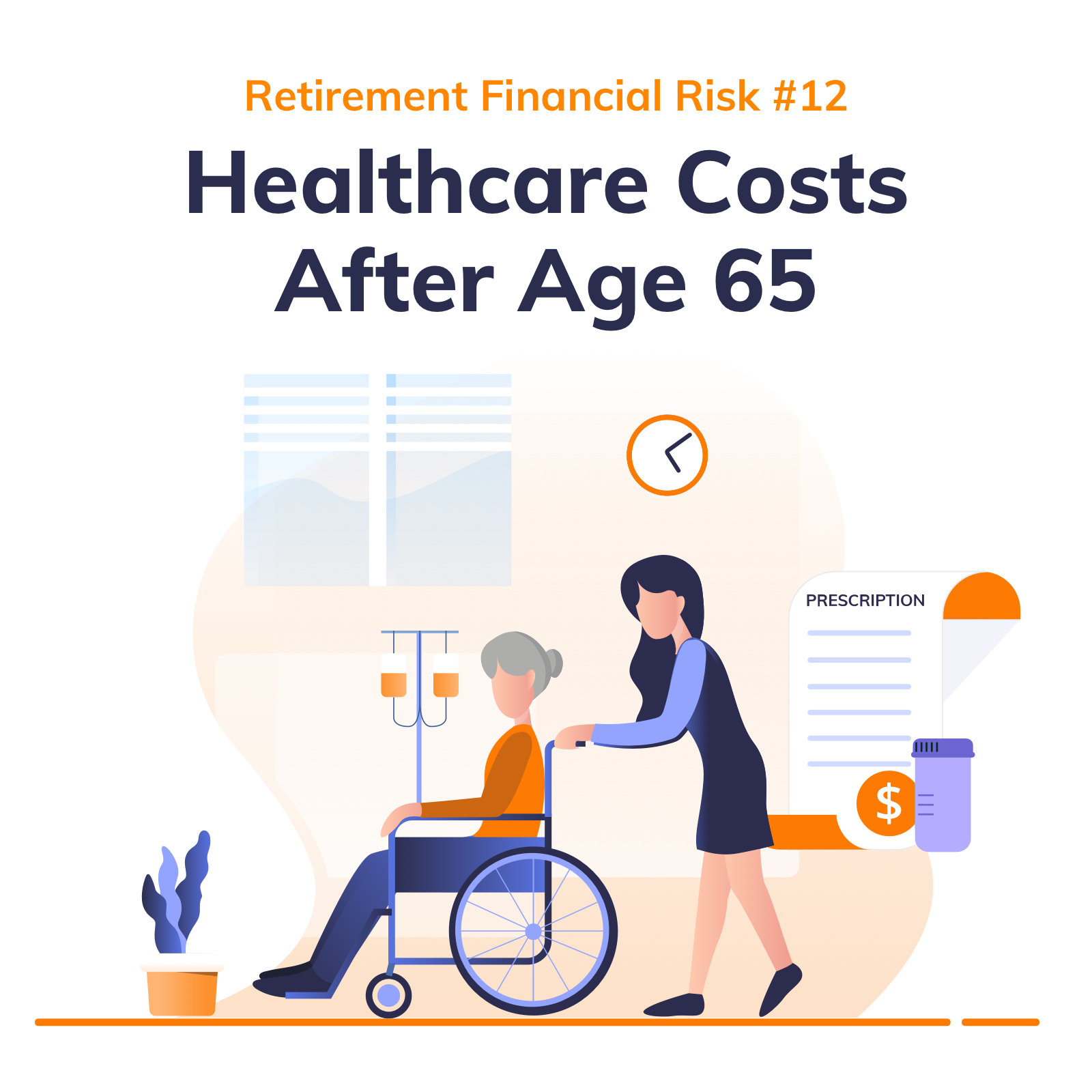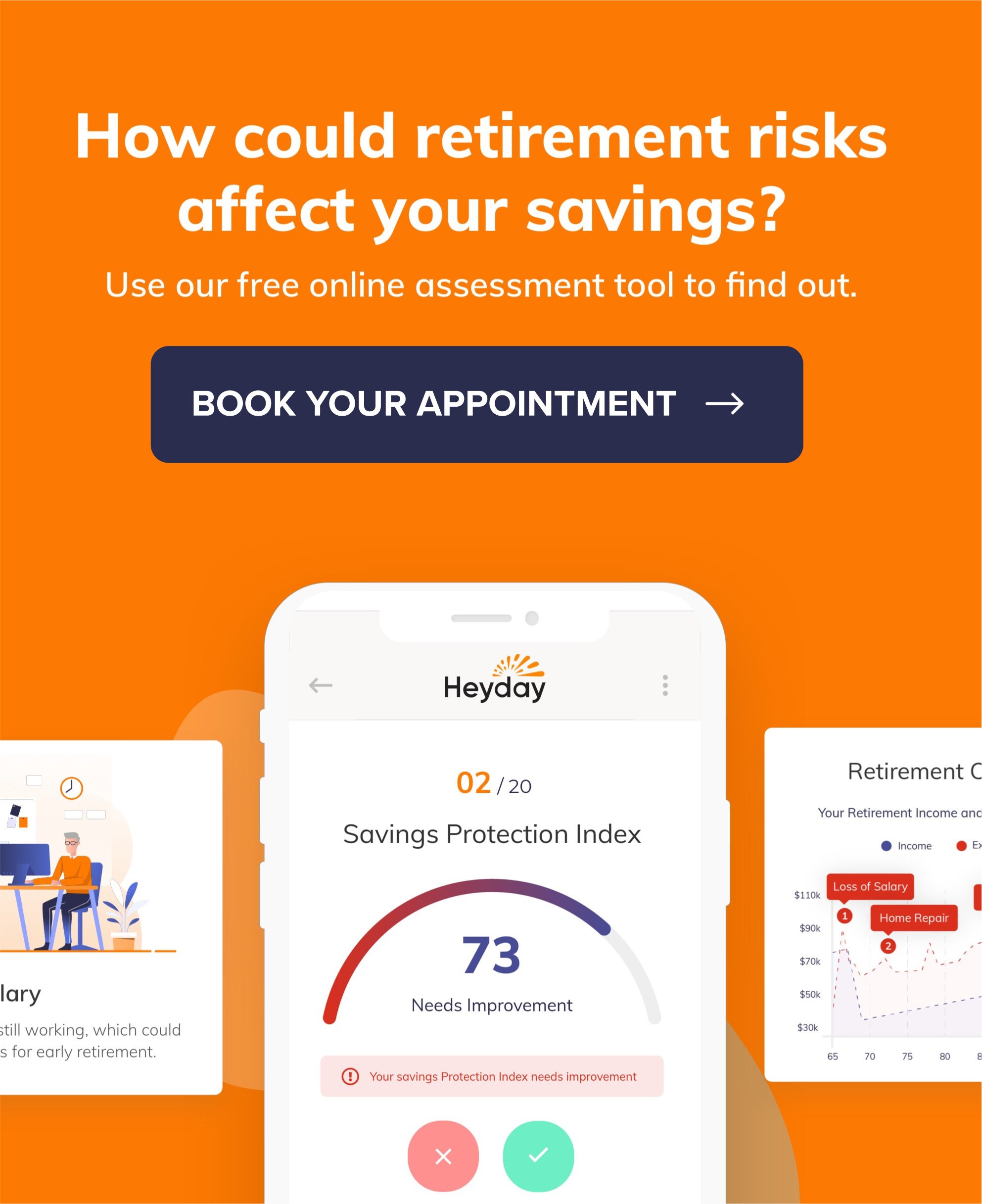Retirement Risk #12: Health Care Costs After Age 65
For Retirees, Health Expenses Can Really Add Up
Some of the biggest unknowns in retirement can be how much medical care we may need and how much it may cost.
According to HealthView Financial’s report, “Why Health Needs to Be Part of Retirement Planning,” a healthy 65-year-old couple retiring in 2019 will need nearly $387,644 to cover health care costs.
“While Medicare premiums should be manageable, medical emergencies can carry out-of-pocket maximums as high as $7,000-$10,000.*”
— Eric Stratton, Heyday founder
Retirees may assume once they’re eligible for Medicare at 65, they won’t have to pay much out of pocket for necessary treatments and prescriptions.
However, Medicare can be difficult to navigate, with multiple parts and pieces, each with its own requirements and potential costs.
This article is intended to give a high-level overview and does not endorse any Medicare product. Visit Medicare.gov, or consult with a Medicare professional to determine the appropriate coverage for your situation.
Here are some Medicare basics:
- Part A - hospital insurance
- Part B - medical insurance, which covers doctor visits and common services associated with those visits
Parts A & B make up Original Medicare, and Part A is what most retirees receive premium-free depending on their work history. Yet, that free policy is limited and doesn’t cover all health care expenses retirees may incur, like deductibles, co-pays and additional costs.
Additional coverage options are available, and we recommend those about to retire consult with a Medicare professional to fully understand their options, which may include:
- Part C - also known as Medicare Advantage, Part C is a private alternative to Parts A and B
- Part D - optional coverage for prescription drugs
- Medigap coverage - private, optional insurance to help supplement the costs that Original Medicare doesn’t cover
Maximum Out-of-Pocket Costs May Surprise You
For those that opt for Medicare Part A and Part B without supplemental coverage, there is no out-of-pocket maximum. Depending on the care needed, health costs could erode retirement savings much faster than expected.
Supplemental plans help provide some caps on out-of-pocket costs. For example, Medicare Advantage plans have an out-of-pocket limit, which could be up to $6,700 per year for in-network providers, or $10,000 for in-network and out-of-network, depending on the plan purchased.
Medigap could provide a cap on out-of-pockets, which can vary by plan.
Average Annual Costs Can Be Significant
A study by the Center for Retirement Research at Boston College on medical spending in retirement revealed that retirees spend an average of $4,300 each year on Medicare premiums, co-pays and deductibles, which add up to about 1/3 of their Social Security benefits.
However, this estimate doesn’t include dental or long-term care, which can get expensive as well.
Ways Retirees Could Help Plan for Costly Health Care
So, how do retirees plan for such an unpredictable and potentially expensive cost in retirement?
- Compare Medicare plans - shop around and compare plans before securing coverage.
- Consider obtaining supplemental coverage - because there are no annual out-of-pocket maximums on Original Medicare, securing a supplemental policy could provide the peace of mind of an annual cap.
- Fund health savings accounts (HSAs) - those under 65 who are still working and have an HSA should consider contributing it as much as possible for future health care expenses.
The idea of paying out hundreds of thousands of dollars just for health care can be very daunting. To help offset their anxiety, some retirees may opt to:
Delay retirement for as long as possible - the longer we work, the more we can save for retirement. From holding off on Social Security benefits to employer-matched retirement contributions, postponing retirement can prolong our savings for expenses like health care. However, most of us have a “use by” date when it comes to our mobility and energy levels. So the longer we work, the less time we may have to enjoy those activities we’ve always looked forward to.
Retire, but cut out all discretionary spending - whether they’re physically unable to keep working, or are simply ready to start the next chapter, some retirees may leave the workforce, but reduce their budgets out of financial concerns. Similar to delaying retirement, canceling plans or eliminating spending on fun activities can also have negative effects. As time marches on, those retirement goals may go unfulfilled, while anxiety over health care costs and other expenses remain.
Consider this hypothetical example using common Medicare and Medigap premiums:
Tom and Jodi turned 65 this year and are ready to retire. While they’re relieved to be eligible for Medicare, the more they learn about their health care options in retirement, the more anxious they get.
Based on the quote they received for Medicare Parts A, B and D and Medigap coverage, their estimated monthly cost for premiums alone are:
Part A - free premium
Part B - $144.60/month
Part D - $32.74/month for drug coverage, with additional out-of-pockets that could cost $1,700/year for three prescriptions
Medigap - $304 ($152/month per person since Medigap insurance only covers one person, so they need two policies.)
Total premiums: $481.34 x 12 = $5,776.08
And these costs don’t include their estimated annual out-of-pocket expenses:
- Approximately $1,700 / year for three prescriptions
- Up to $5,880 for their Medigap policy’s annual out-of-pocket max
Concerned about these projected annual expenses, Tom and Jodi consider other options:
Should one or both of them keep working a few more years?
Should they retire, but cancel the second honeymoon they’ve been looking forward to for the last 40 years, as well as their family reunion and other fun trips?
Of course, none of these scenarios are what most of us pictured while saving and working all those years. And without proper planning, they could become reality for some retirees.
Fortunately, there are steps retirees and pre-retirees can take now to plan ahead. One proactive step they can take is to complete an online risk assessment like Heyday’s Custom Retirement Review.
By answering a few simple questions, retirees and pre-retirees can forecast their expenses and the potential risks they may come up against. They’ll receive a Savings Protection Index that tells them how at-risk their nest egg may be.
From there, it’s easy to speak with a financial professional and make any adjustments to prolong their savings and their livelihood.
Ready to give it a try? Get your Savings Protection Index here.
*https://www.kff.org/medicare/fact-sheet/medicare-advantage/

Written by Cindy Collins
Forbes Contributor & Retirement Financial Professional
Cindy Collins is a Heyday Retirement contributor with over 30 years of experience in personal financial services.

About Heyday
Heyday is a premier source for comprehensive tools and informative content designed to help retirees build a secure retirement income plan.
Subscribe
Stay in the know on a wide range of retirement topics.








